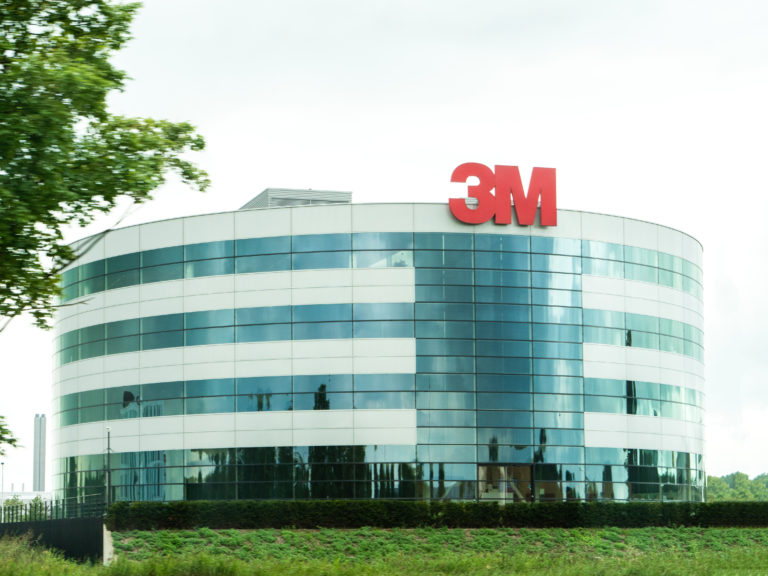Q&A with 3M: Mapping Out a Successful Approach to Innovation
Founded in 1902 and still a leader in developing innovative products and solutions, 3M continues to change the conversation around innovation. 3M, a company that applies science in collaborative ways, detailed in a Q&A with Foodbuy how their innovation process works. 3M gives a comprehensive overview of how they have successfully applied innovation to their culture, from using a customer-first mindset to sharing one example of how they found a need in the marketplace and then developed a product to meet that need.
Question: How does 3M find opportunities for innovation?
Answer: 3M looks for opportunities to develop new and innovative solutions in many ways. Most importantly, we start with the customer. We work to understand their challenges and needs so we can find solutions. We also work with technology leaders from universities, start-up companies, and organically (within 3M) to understand new developments that might provide opportunities for customers. The intersection of these approaches is often where we create new products.
Q: What critical steps are involved early on for 3M to assess what qualifies as a “real opportunity” to launch a new product in the marketplace?
A: The early critical steps can vary, depending on what the marketplace is demanding. In some cases, it is critical to validate if a solution meets an immediate need that a customer has. In other cases, it requires much more research, to understand a customer’s unarticulated need. Sometimes customers have processes and issues that are addressed with other solutions, so the need isn’t clear; in those scenarios there is more work that is required to determine if we can change the customer paradigm to improve their operation. Those situations can provide the greatest impact both to 3M and to our customers. In summary, 3M needs to assess business potential and risk exposure via a series of questions centered around the following three: Is it real? Can we win? Is it worth doing?
Q: Once an opportunity has been vetted, what does 3M’s innovation process look like? Is this a standard process or does it vary across the various industries you’re a part of?
A: Once we have vetted an opportunity, we follow a standard process to bring a product to market. The process is flexible to meet the needs of the 3M business and market but has a standard framework that guides us. Our traditional “NPI—New Product Introduction” process has 5 phases, and we are working to launch a new process that reduces this to fewer phases called “3M Grow”. The new process provides more front-end freedom to explore new ideas, with back-end rigor that ensures we launch products that are robust and provide customers with the critical components they need to successfully adopt our products. Also, of note, every new 3M product that enters our new product commercialization process must have a sustainability value commitment.

Q: To many consumers, 3M may be most known for their leading brands in the adhesives and tapes categories, which have been around for decades. How does 3M ensure they continue to innovate those iconic brands/products?
A: We work hard to maintain category leadership and that means constantly reinventing. We do this through ongoing customer insight work, comprehensive marketing programs and incredible collaboration across our R&D community. Unique to 3M is that our technologies are owned by the company – not by any single business within our company – which gives us the freedom to combine our foundational and differentiating technologies in new and different ways to create new platforms and new products. For example, most don’t think of floor pads as an abrasive, but collaborating and combining the abrasive and non-woven technologies gives us 3M™ Floor Pads. On the other hand, expanding on a single core technology like adhesives, moved us from a single 3×3 canary yellow Post-it® Note to now over 250 Post-it Note SKUs.
Q: Can you share a real-life example of how 3M has identified a need in the marketplace and created an innovative product to address that need?
A: An example in our Commercial Solutions Division is the work we are doing today to advance facility care solutions. One of the main challenges in maintaining a commercial building is floor care. 3M invented floor pads in 1958, and those are still used today for daily maintenance to keep floors clean, shiny, and safe. Today, we are working to reduce the daily maintenance process from 2 steps (cleaning and burnishing) to one. This is driven by increasing labor costs and labor shortages that our customers face. We launched a product in 2018 that reduces the labor required to maintain floors with our new Scotch-Brite™ Clean and Shine Floor Pad that cleans and shines a floor in one step.
Q: Thinking forward, what does 3M see as the next big area for innovation in their core industries?
A: Holistically, 3M is looking at global marketplace megatrends and applying those insights in relevant ways for each of our four primary business groups to determine priority growth platforms. For example, a key megatrend is related to addressing the “expanding digital economy.” In the healthcare market, 3M is providing advanced solutions for software and data management to help providers get the best outcomes for patient health. In commercial buildings, we are providing advanced film solutions to reduce energy and natural resource consumption, in alignment with the “reimagining natural resources” megatrend as well as working with robotic autonomous equipment suppliers who are providing next generation solutions for floor care, in alignment with the “shifting demographics” megatrend. The megatrends tend not to shift dramatically over time, but the way we apply them in our priority growth platforms is something we evaluate regularly.
